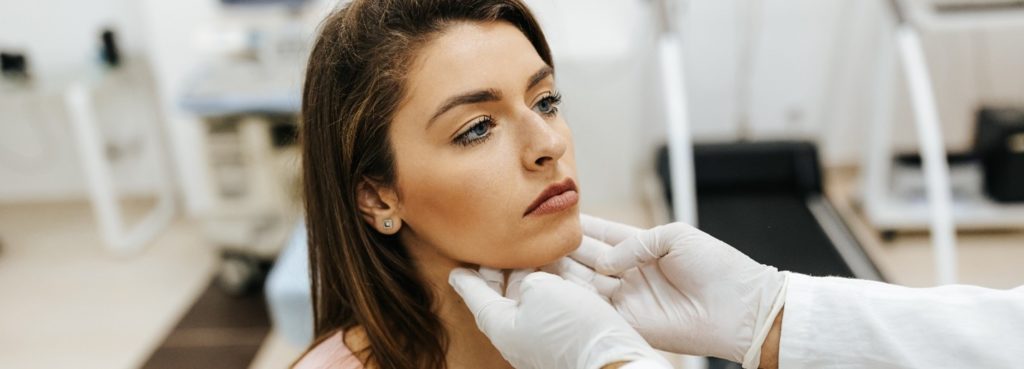Morning Report — Not Your Typical Medical Newsletter
We get it, you see a lot of medical newsletters, so hear us out. Twice a month, we’ll highlight important medical news sprinkled with witty commentary, fun facts, giveaways, and more… because learning should be fun! Subscribe to receive the Morning Report directly.
Bursting the Bubble on Carbonated Water

You tell your patients to drink more water, but consuming this colorless, odorless, tasteless beverage is a chore for many. However, just like when trying to get a two-year-old to take a bath, adding bubbles makes everything more palatable.
But is unsweetened carbonated water as beneficial as still water?
In a New York Times article, dietary experts compared the benefits and harms of the two beverages. Although carbonated water hydrates as well as still water, the experts noted some drawbacks to water’s trendier and more effervescent alter ego:
- It doesn’t include the fluoride found in tap water, and fluoride—as we know—can prevent tooth decay (pro tip #1: make your own carbonated water from tap water)
- The carbon dioxide in carbonated water lowers the pH level in your mouth, and that increased acidity can erode teeth (although, not as much as soda or fruit juice)
- Carbonation can worsen acid reflux, cause abdominal distension, and increase belching and flatulence (it has to come out one way or another!)
- Many carbonated water brands boast “natural flavor”—well, that could be anything!
The good news is that drinking unsweetened carbonated water is better than drinking soda or juice, according to the experts. But given that it’s not as beneficial as drinking still water, experts advise limiting consumption to once a day (and even less for kids). If patients (or you) need more fizz than that, two or three glasses may be okay if they’re consumed with a meal to neutralize the acid (pro tip #2: use a straw to spare your teeth some of the acidity).
If you or your patients are like one member of our Morning Report team who would go thirsty if her only option were tap water, not to worry—carbonated water is a reasonable alternative. As with everything except enjoying the sweet baritone of Rick Astley, moderation is key. (That one’s for our avid readers.)
The Ideal Number of Daily Steps

We know the body functions best when it moves often. But what’s the perfect amount of movement to maximize the human life span? Is it 10,000 steps per day, as most fitness trackers suggest? Is a leisurely stroll as beneficial as a brisk cadence with a no-nonsense arm swing?
An observational cohort study looked at 2,110 middle-aged adults (mean age 45 years; 57% women; 42.1% Black) from the CARDIA study and grouped them by number of daily steps via an activity tracker: low (<7,000), moderate (7,000-9,999), and high (≥10,000). Stepping intensity was also noted within each group. After a mean follow-up of 10.8 years, researchers noticed a strong link between step quantity and premature all-cause mortality.
What was the magic number of steps for this study?
At least 7,000 steps per day. Those in this study who cleared that bar were 50% to 70% less likely to die prematurely than those whose number of steps fell below 7,000, and the more steps the better—until 10,000 steps. At 10,000 steps, the upward trajectory of risk reduction began to flatten. And, somewhat surprisingly, step intensity did not play a role in mortality risk reduction.
Advise middle-aged patients not to feel guilty when their tracker admonishes them for falling short of 10,000 steps. Hitting 7,000 will most likely do the job! And whether they take their daily strides easy like Sunday morning or like they have somewhere to be, they’ll reap the benefits.
And how far is 7,000 steps? It’s about 3 to 3.5 miles of walking for those of us with average stride lengths and about 6 miles for Tacko Fall.
Did You Know?
As we just read, 10,000 steps per day isn’t a bad goal for middle-aged adults, but it may not be necessary for longevity. And one study showed that older women may see a significant benefit at only 4,400 steps, with diminishing returns beyond 7,500 steps. So, why do most fitness trackers recommend 10,000 steps? We like a round number as much as the next person, but this one seems as arbitrary as the five-day workweek. We did some digging and learned that it’s because of manpo-kei. We’ll explain.
In the mid-1960s, Japan experienced a burgeoning fitness craze, ignited in part by the 1964 Tokyo Olympics and by the growing prevalence of obesity. Because of its simplicity, walking became the go-to activity. A profit-minded clockmaker then created a pedometer, calling it a “manpo-kei” because the name resembled a walking man when written in Japanese characters. The name translates to “10,000-steps meter.” When the pedometer first entered the Japanese marketplace, it sold faster than a Red Ryder BB gun at Christmas. This set the scene for countless Japanese walking clubs whose rallying cry became “manpo-kei,” or “10,000 steps.” The 10,000-step goal quickly infiltrated the global fitness community, despite its lack of scientific evidence.
The Zoom Zzzzz’s

The pandemic popularized “doomscrolling,” introduced us to the terms “superspreader” and “social distancing,” and necessitated virtual meetings—lots of virtual meetings. No one had a better pandemic than Zoom, but the use of its camera feature may be as controversial as John Kreese’s karate training philosophy.
Because many feel that turning on the camera leads to more engagement, we have made ourselves presentable from the waist up and orchestrated the perfect background. But new research indicates that being on camera may also have given us unnecessary fatigue.
Approximately 1,400 observations of 103 people across four weeks showed that having a camera on correlated with greater fatigue and less engagement, including less vocal participation. This held true especially for women and those with newer roles in the organization. That fatigue affected meeting performance not only that day, but also the next day.
The solution?
The researchers suggest that giving employees the option to turn off their cameras may reduce fatigue and improve performance. “Of course we’re more rested and engaged when the cameras are off,” says the guy lounging in his chip-encrusted PJs.
So, what does this mean for the busy clinician?
For the time being, we do not advise turning off your camera during your next telemedicine visit, but maybe you can click the “camera off” button for your next department meeting.
And the Winner Is…
Thank you all for submitting your cartoon caption contest ideas. They were fantastic. This month’s winner is listed below!

THERE MUST BE AN EASIER WAY TO CODE THIS AS MY MEDICARE ANNUAL WELLNESS VISIT
Congratulations to Bridgette Franey, MD, a family medicine physician from San Diego, CA for penning this excellent caption!
Check out next month’s issue of Morning Report for the next cartoon caption contest.
How Strong Is the Hypothyroidism-Depression Connection?

If your patient’s hypothyroidism is currently uncontrolled, you may have assumed it was contributing to their depression. New research casts some doubt.
In a systematic review and meta-analysis, researchers examined 25 studies comprising nearly 350,000 participants to answer the question “Is there an association of hypothyroidism and thyroid autoimmunity with depression?” Yes, but the link may be a bit more tenuous than researchers once thought. Here’s what they found:
- A modest link between hypothyroidism and clinical depression (OR 1.30, 95% CI 1.08-1.57)
- A stronger link between depression and more overt hypothyroidism (OR 1.77, 95% CI 1.13-2.77) than with subclinical hypothyroidism (OR 1.13, 95% CI 1.01-1.28)
- A stronger link in women (OR 1.48, 95% CI 1.18-1.85) and a non-significant link in men (OR 0.70, 95% CI 0.40-1.25)
- An inconclusive and weak link between autoimmunity and clinical depression (OR 1.24, 95% CI 0.89-1.74)
According to the study’s authors, “It may be time to reconsider the paradigm of a strong connection between hypothyroidism and depression…. This is good news for patients with hypothyroidism or, in particular, with thyroid autoimmunity. In counseling, we may not be able to rule out depression as a comorbidity, but it is not looming large as a very likely threat.” Nevertheless, prompt treatment for depression in patients with hypothyroidism is obviously still important.
Did You Hear?
We were inspired by the story of 29-year-old Hayley Arceneaux, PA-C. Not only did she overcome childhood cancer—losing her leg as a result—and become a physician assistant to help children going through similar circumstances, but last week, she literally stepped off the planet. As part of a fundraiser for St. Jude, where she was treated as a child and now works, Arceneaux was given the opportunity to serve as medical officer for the all-civilian Inspiration4 mission. She became the youngest American and first person with a prosthesis in space. After orbiting Earth for three days, she and the rest of the four-person crew returned safely home on September 18. We hope she inspires clinicians everywhere!
Rapid-Fire COVID-19 Updates
To boost or not to boost? That is the question
Talk about rapid-fire COVID-19 news–the past few weeks have been filled with updates and announcements around vaccination.
- On Friday, September 17, the FDA advisory panel voted unanimously in favor of a booster dose of Pfizer-BioNTech’s vaccine for people 65 years and older and those at high risk for severe COVID-19 infection; this vote came after an independent committee voted against boosters for all adults
- On Monday, September 20, Pfizer announced phase 2/3 trial data showing safety and a “robust” antibody response in children ages 5 to 11; and as a result, FDA emergency use authorization is expected in the coming weeks
- On Tuesday, September 21, Johnson & Johnson announced that a booster of its COVID-19 vaccine provided 94% protection against symptomatic infection
- On Friday, September 24, the head of the CDC went against her advisory panel and expanded the use of the Pfizer-BioNTech vaccine booster shot to include not only older and/or vulnerable Americans but also those who work in high-risk settings, such as clinicians
Yes, we are still talking about masks
By this point, we get that surgical masks offer more protection than the Red Sox mask your Aunt Joanie sewed together. However, there has been a lack of solid study data to support this belief, making it challenging to convince your patients or mask skeptics. Now we have data from a randomized trial of almost 350,000 people across Bangladesh that found that surgical masks reduced symptomatic SARS-CoV-2 transmission by 9.3% overall and by 35% in those 60 years and older. Unfortunately, the study did not find similar results with cloth masks. The study implemented a strategy to increase mask usage that more than tripled mask wearing.
Interested in more healthcare news? Here are some other articles we don’t want you to miss:
- Baseline Gut Metagenomic Functional Gene Signature Associated With Variable Weight Loss Responses Following a Healthy Lifestyle Intervention in Humans
- Cognitive Stimulation in the Workplace, Plasma Proteins, and Risk of Dementia: Three Analyses of Population Cohort Studies
- Worldwide Trends in Hypertension Prevalence and Progress in Treatment and Control From 1990 to 2019: A Pooled Analysis of 1201 Population-Representative Studies With 104 Million Participants
- ‘Empathy Fatigue’ in Clinicians Rises With Latest COVID-19 Surge
- Cannabis and Tobacco Use Prior to Pregnancy and Subsequent Offspring Birth
- Eating Walnuts Daily Lowered ‘Bad’ Cholesterol and May Reduce Cardiovascular Disease Risk
- Standing Is Associated With Insulin Sensitivity in Adults With Metabolic Syndrome
- Regulation of Beta-Amyloid Production in Neurons by Astrocyte-Derived Cholesterol
Morning Report is written by:
- Alissa Scott, Lead Author
- Aylin Madore, MD, MEd, Author and Editor
- Shira Page, RN, NP, Author and Editor
Would you like to share your feedback with Morning Report? Drop us an email at morningreport@pri-med.com and let us know how we’re doing.
Please note that the summaries in Morning Report are intended to provide clinicians with a brief overview of an article, and while we do our best to select the most salient points, we ask that you please read the full article linked in each summary for clarification before making any practice-changing decisions.
Enjoying Morning Report? Subscribe & Share It With Your Colleagues!
Is Morning Report for you? It is if…
You’re someone who needs quick-hitting, accurate medical news and you’re a fun and witty healthcare professional who wants your news with some flare.
You don’t just need to know about the latest metabolism study–you need to know how it parallels an Alanis Morissette hit. If you’re reading about acupuncture treatment, you need us to skip the needle puns and get right to the point. We keep things simple, but when we do get into the scientific weeds, we always remind you to check for ticks.
Subscribe to receive the Morning Report directly to your inbox every other Saturday.


